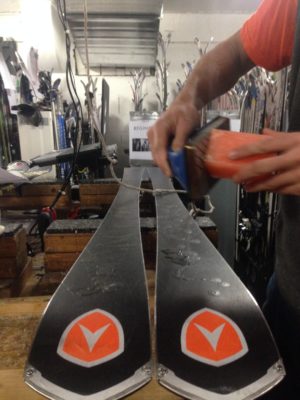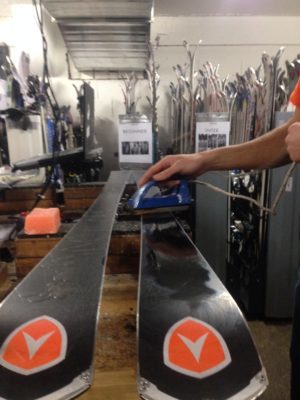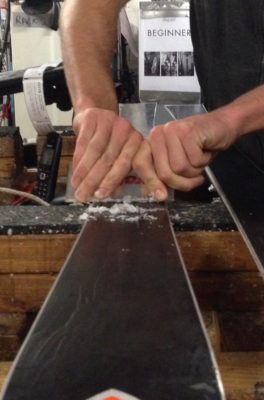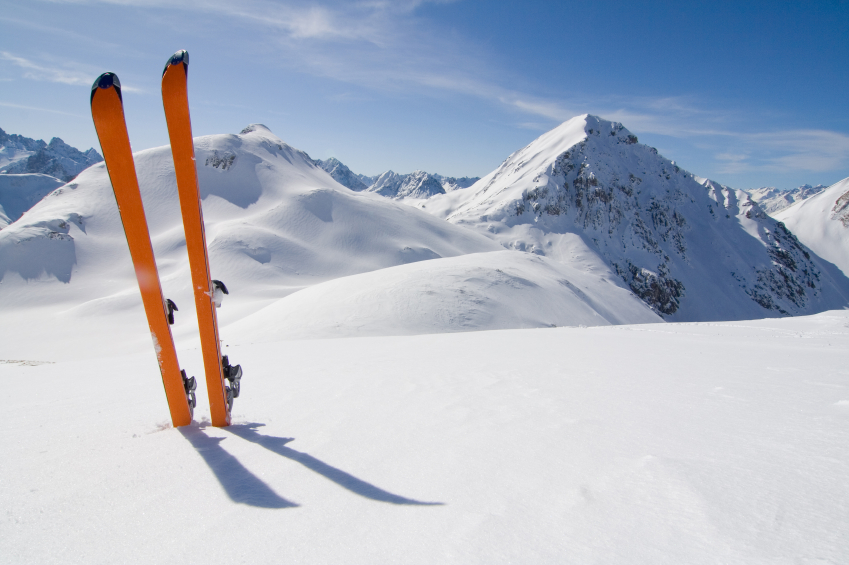If you’ve got your own skis or snowboard, then you’ll want to make sure you take care of them, so we asked our friends at ski hire shop and ski delivery service Local CHX to give you some ski waxing tips. Ski technician Sam has very kindly written this comprehensive guide to his top ski waxing tips to help you get the most of your kit and keep it looking good and riding well for years to come.
Ski waxing tips from Sam
I’m not going to sit here and pretend to be the Yoda of the ski tuning industry. But I’ve seen a few winter seasons over the years and waxing your skis is an important aspect of being a ski bum, or indeed just those who take pride in the equipment they are sliding down the mountain on. A man who’s name I cannot remember taught me the art of ski tuning in between shifts at the local pizza shop in my first season in Methven, New Zealand.
Since then I have accumulated enough knowledge from good sources to provide some ski waxing tips. Note: For the purpose of this blog I will be referring to skis as it sounds more natural in my head… I’m not one to get caught in arguments about which form of snow riding is the best (’cause we all know it’s skiing!). So here it goes…
What you need
It doesn’t cost much to get the equipment needed for the basic upkeep of your skis:
- Strong elastic bands to retract the brakes (skiers only).
- Iron: Preferably a specific waxing iron, not mum’s old iron or one you found in the cupboard of your seasonal rental property. Also, household irons fluctuate in temperature more and can cause damage to the base of your skis if they are too hot.
- Wax: For your average rider, an All Temperature Wax will be sufficient. There are temperature specific waxes but unless you plan to take daily readings of snow temperature let’s not pretend to be pros. Another option are fluorocarbon waxes, which are higher performance waxes, but higher in price. Warning! Fluorocarbon waxes also have health risks so use in well-ventilated areas or consider using a mask.
- Scraper: Plastic scrapers do the job but you can use metal scrapers if trust your hands as they can be harsh on the base.
- Brush: I’m not going to delve into the quiver of brushes you can use. To be honest for the most part of my professional ski bum career (I am recently promoted to executive ski bum – thank you) I have used a heavy-duty kitchen sponge, the green ones. These I find work well but a specific brush will be better for the skis and performance.
Preparation
It’s not the most important part of the process (this is reserved for the sensation of gliding down the mountain with a freshly tuned set of skis) but getting the skis ready is pivotal to a successful wax.
You probably can’t wax your skis too much but if you start to see visible white areas then we are dryer than the start to this season. Skiing them you will feel them slowing you down.
Have a look at the skis and see if there is more damage than wax can fix. If there are any core shots or deep gouges then they will need be filled with P-Tex, which can also be done at home before waxing.
With a straight edge see if the skis are railed (where the edge is higher than the base) or base high. If this is the case it’s time to take it to a professional and cough up some coin as it may need a base grind to get it back true.
The skis should be at room temperature and dry before you wax them, and any dirt thoroughly removed with a cloth.
Applying the wax

Drip your wax on to your skis
- Place the skis base-up using blocks to hold the bindings off the working surface.
- Use the rubber bands to retract the brakes. Do this by pulling the ski brakes up and stretch the rubber band from one brake to the other over the heel piece.
- Hold the hot iron above the skis and the wax block to the iron so it starts to drip wax onto the base. Continuously move the iron down the skis so it leaves a thin trail of wax. Over time you will start to recognise how much wax you need to apply. It takes practice!
- Next step is to spread the wax evenly over the ski bases using the iron. It’s very important to keep the iron moving so you don’t overheat one area and damage your bases. If an area is short of wax just drip some more on that area and iron it around. The goal is to penetrate the small pores of the base structure with the melted wax by evenly spreading it around.

Keep the iron moving for waxing your skis
After this it’s time for a break to let the wax cool. A quick pint / coffee / siesta later (about 30 minutes) and you’re ready for the next step.
Finishing
Once the wax is cool to touch we can scrape it off. Now, I’ve never thought too much about the direction of scraping but after recent chats with fellow self-waxers (of skis) I have come to believe that directional scraping makes sense. Therefore, remove all excess wax by angling the scraper and push from tip to tail. Repeat this until all the wax is removed. You might hear of people ‘skiing off the wax’, which I do not recommend for a good finish and longevity of the skis. Most scrapers also have a little 90° angle which is to remove the wax from the edges.

Scrape the wax off in the direction of the ski – tip to tail
After you have finished scraping it’s time to give the skis a good ol’ brush! Again, to the music of One Direction, tip to tail, use medium length strokes at a firm pressure. Continue this for at least 5 minutes and you will see your skis become glossy looking. I always finish with a few full-length tip to tail strokes and the skis are good to go.

Your skis are ready to ride – nice glossy finish after a solid brush
Final ski waxing tips
A very wise Goat in Squaw Valley once gave me some great advice: new skis need to be waxed. Who would’ve thought? The issue is that new skis are left for long periods of time and exposed to dust which causes them to dry out and shrink. Therefore, when you get a new pair of skis give them a good wax to the tune played in the rest of this blog. NB. Goat’s name is actually Ron, an absolute Guru and maybe the best ski technician in the world, for safety though – address him as Goat.
De-tuning. A concept you may not have heard of but it’s imperative at the end of the season when you’re trading out ski wax for surf wax. 2 things:
- Wax your skis but leave the wax on. This prevents the base from drying out over the summer months.
- Wind down the DIN settings on your bindings. The springs are under a lot of pressure so wind them down to release the pressure.
These ski waxing tips, I hope, will help you get you down the mountain faster, prolong the life of your skis and most importantly give you the satisfaction that you can maintain your own equipment. Now get out there and enjoy and always respect the mountains.
A huge thank you to Sam from Local CHX for providing these ski waxing tips for us. If you don’t have your own skis or snowboard though, then we are happy to be able to help with discounted ski hire.
Local CHX are one of our trusted ski hire partners, and with their help, we offer all Chamonix All Year guests 30% off ski hire when they book in advance, or 20% when they book in-resort. We also work with Local CHX to provide ski hire delivery to our chalets and properties outside Chamonix centre, so that we can always offer a convenient option for our guests when a ski hire shop isn’t within easy walking distance.



